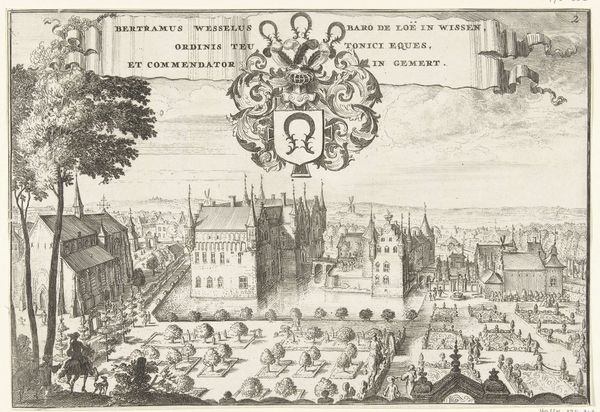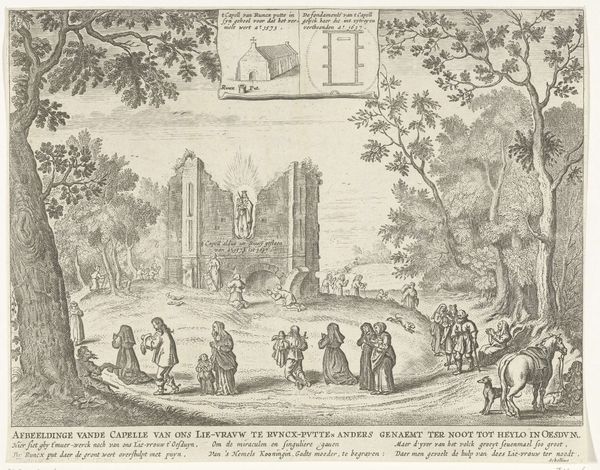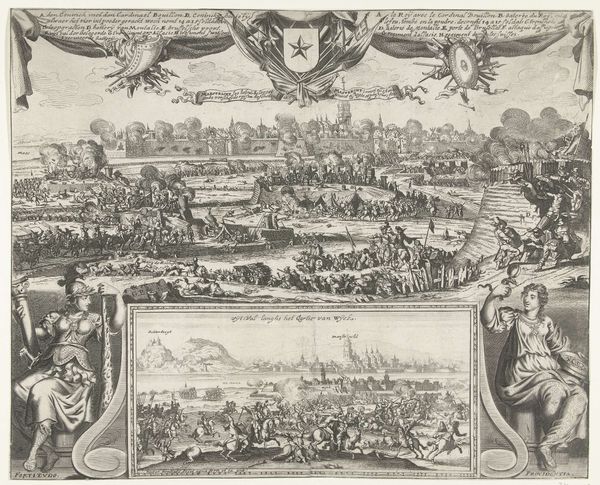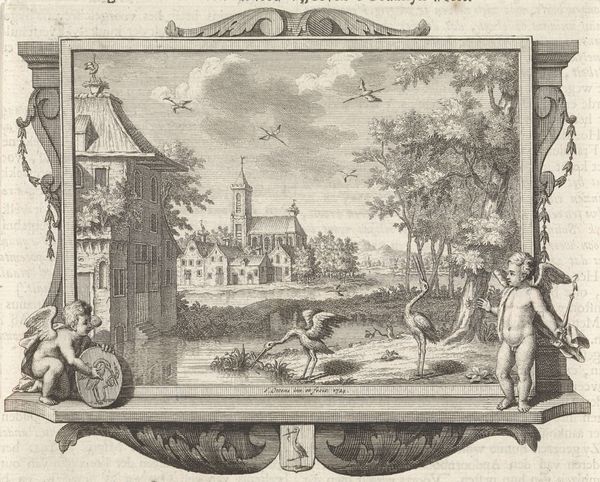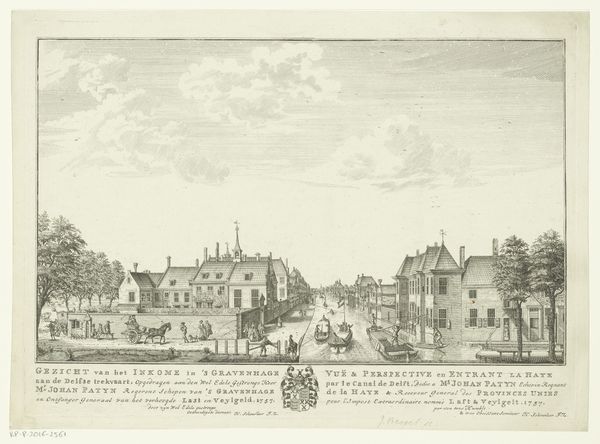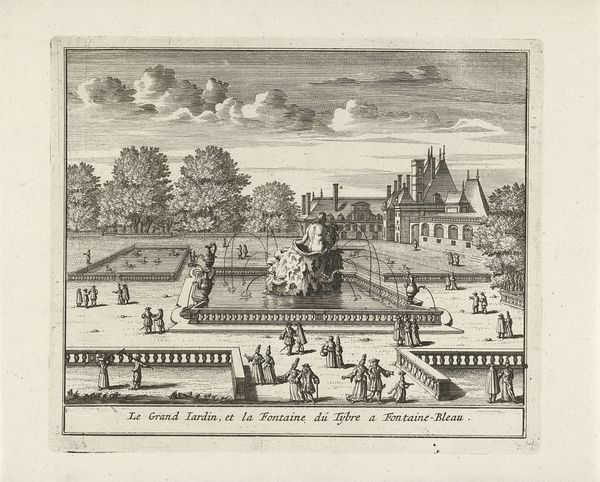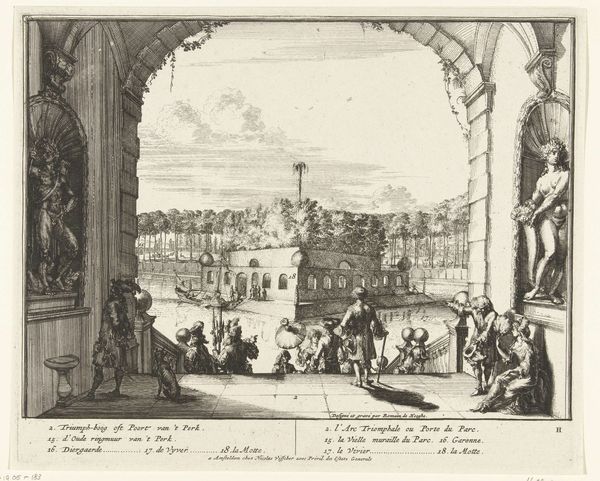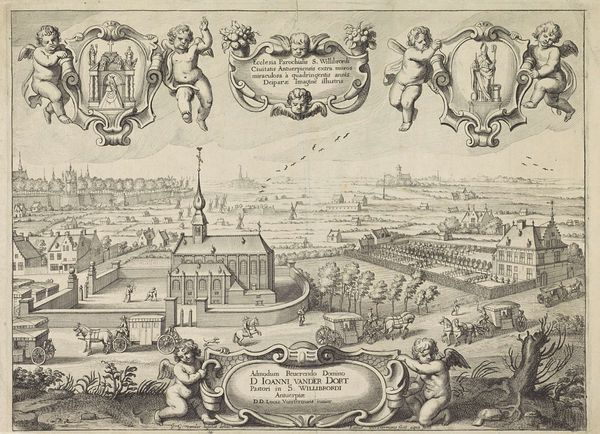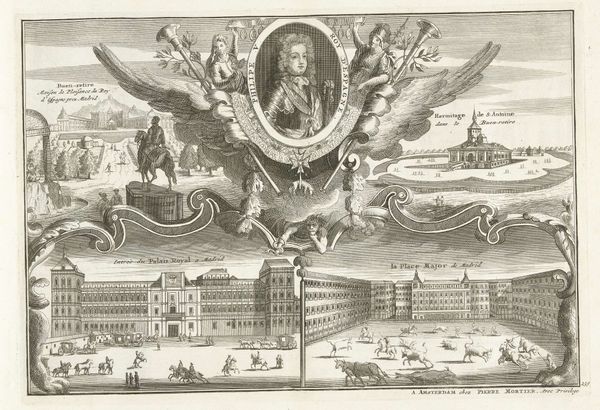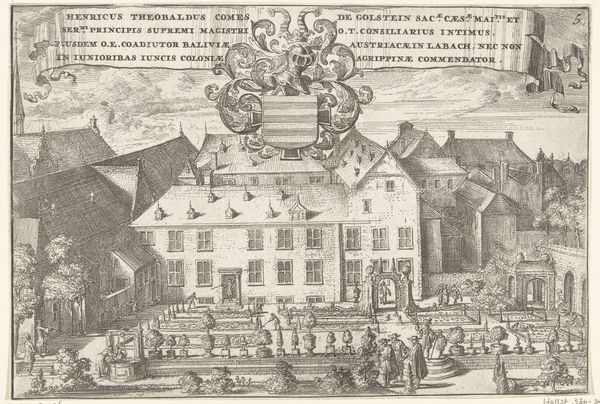
drawing, etching, ink
#
pen and ink
#
drawing
#
baroque
#
pen drawing
#
mechanical pen drawing
#
pen illustration
#
pen sketch
#
etching
#
old engraving style
#
landscape
#
personal sketchbook
#
ink
#
sketchwork
#
pen-ink sketch
#
pen work
#
history-painting
Dimensions: height 167 mm, width 246 mm
Copyright: Rijks Museum: Open Domain
Curator: Look at this detailed drawing of Gezicht op kasteel Bekkevoort by Romeyn de Hooghe, created around 1700. It's currently housed in the Rijksmuseum. The work combines pen and ink with etching, typical of the Baroque landscape style. What strikes you initially? Editor: The immediate feeling is one of… loss. The skeletal remains of what I assume is the castle, juxtaposed with the idyllic hunting scene and those imposing heraldic symbols above… there’s a stark contrast between present decay and lingering power. It hints at a deep societal tension. Curator: The heraldry certainly reinforces the artwork’s symbolism of power, but it also functions as a cultural signifier; a proud emblem linked to lineage and noble entitlement. That visual language was easily readable for contemporary audiences. Editor: I wonder how ordinary people at that time really "read" these symbols of power, given the realities of inequality. Were they inspiring or just imposing, perhaps even oppressive? It reminds me of Foucault's writings on visibility and control. The image does make you think about whose stories are deemed worthy to be visually preserved and promoted through commissioned artwork. Curator: The visual precision is astounding, the artist captured with the etching both architecture and nature surrounding the Castle, that evokes the passage of time. Observe how the drawing utilizes the heraldic emblems placed over a ruined structure, hinting at nobility enduring despite physical ruins. A very potent reminder that tangible decay doesn't diminish ideological lineage. Editor: Precisely. It begs us to examine who continues to benefit from these established symbolic narratives, even when the physical structure declines. The ruins and the hunting party at the river; these symbols are all pieces within a larger socio-political puzzle. What does that landscape become, without the idealized symbolism overlaid? Curator: For me, seeing how symbols preserve communal identities regardless of social shift resonates still today. These embedded icons remain important threads weaving societies together throughout generations. Editor: Agreed, art always functions within societal dialogues – questioning inherited values, resisting power dynamics, while, too, re-envisioning the futures, we dare to shape and forge ahead of us all.
Comments
No comments
Be the first to comment and join the conversation on the ultimate creative platform.
